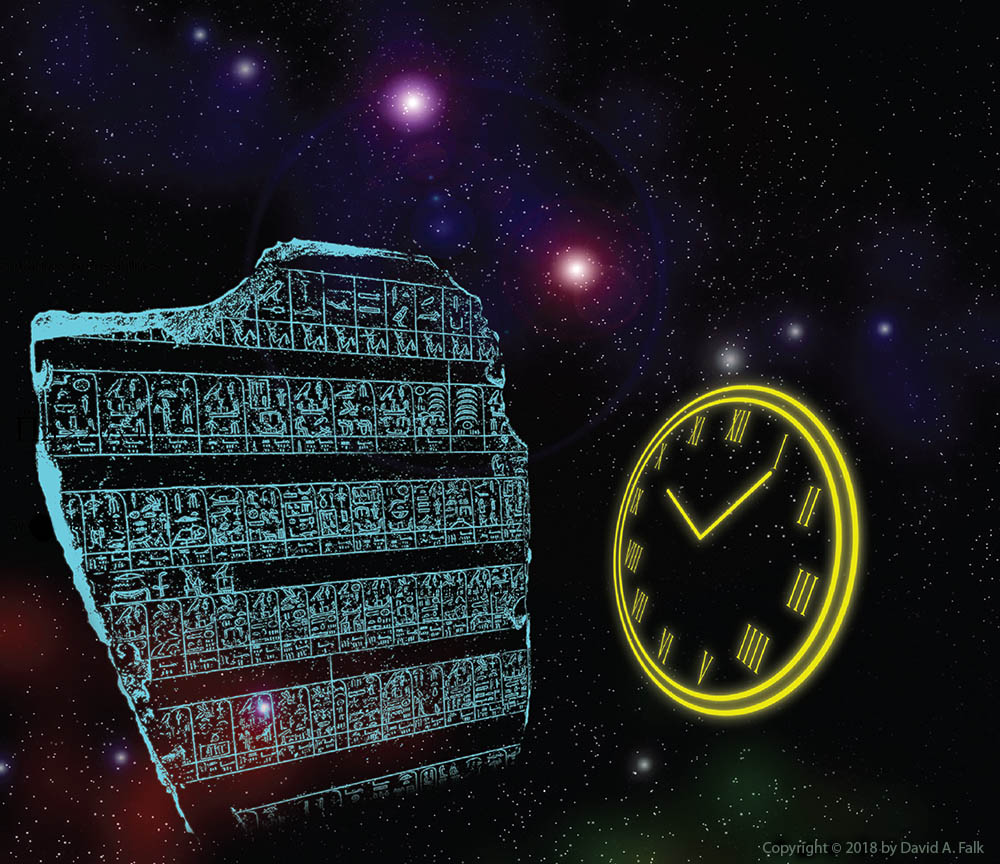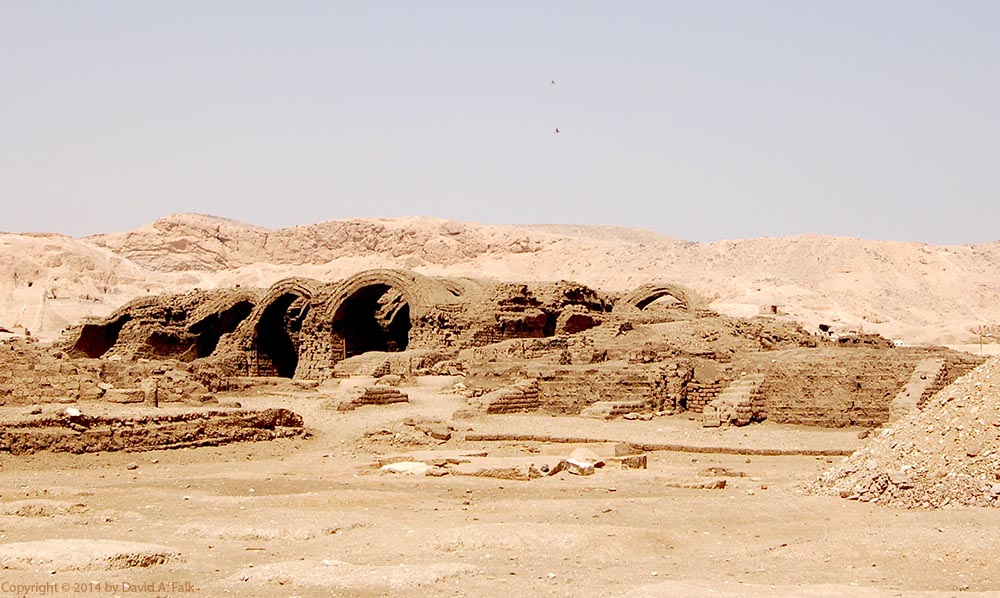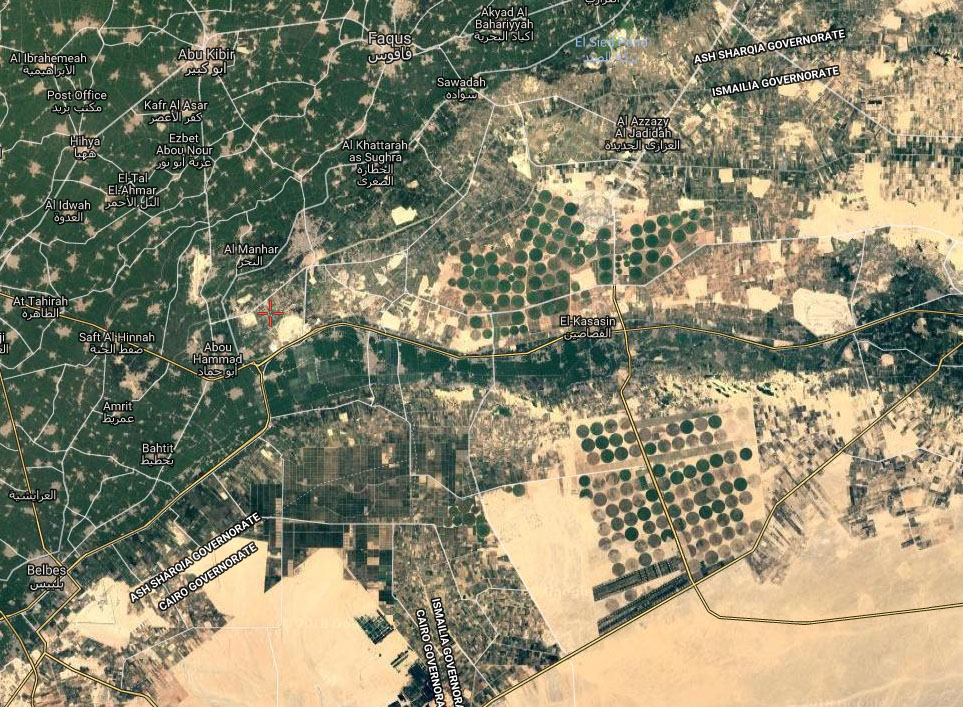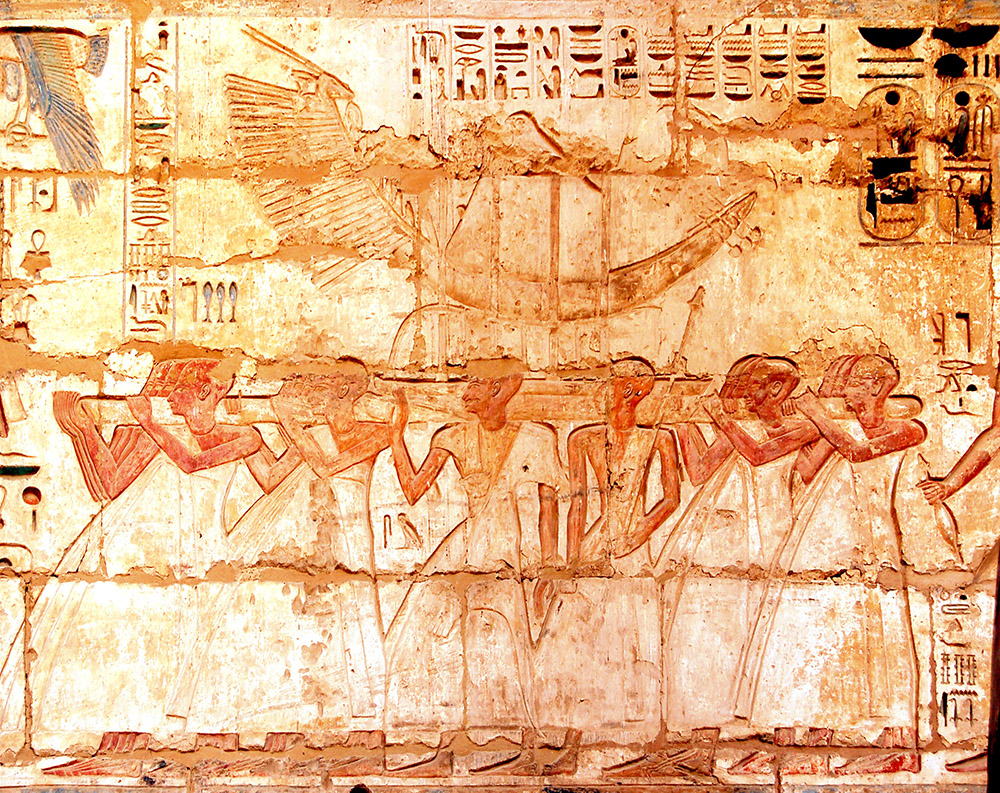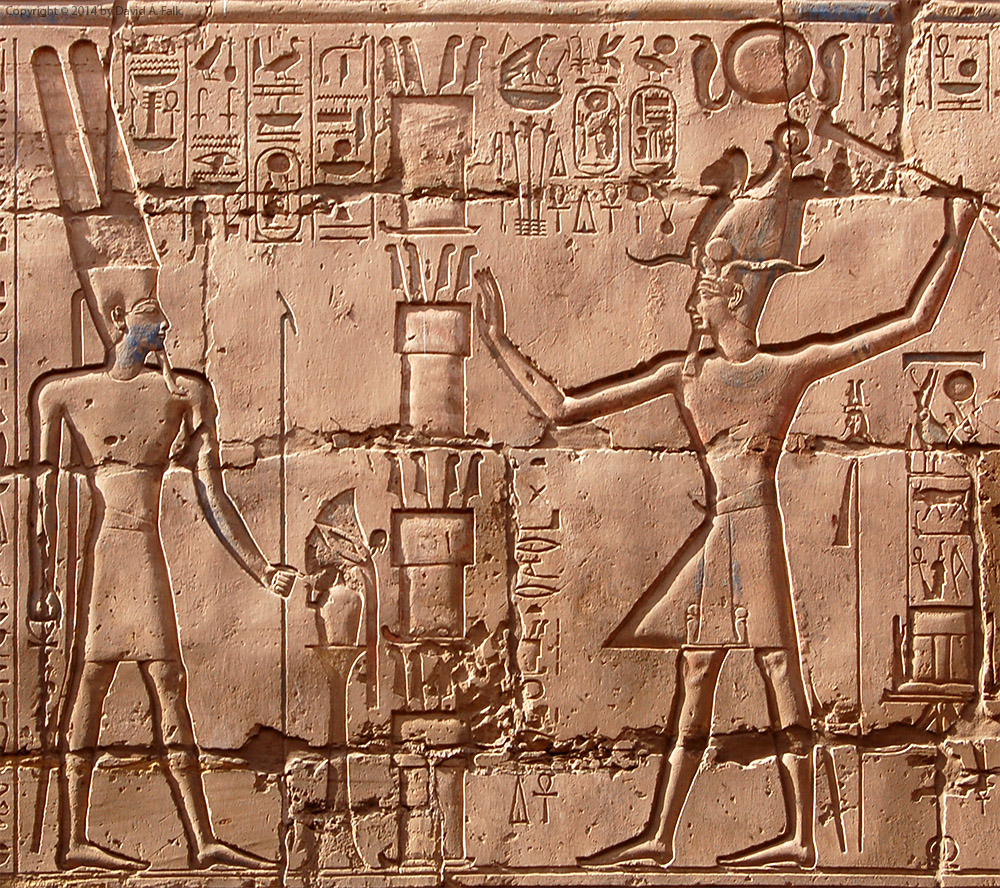Tag: research
The Tower Migdol
Groundhog: Latest Breakthrough in Chronology
The Problem of Chronology
The fundamental problem was that anyone could develop a chronology without any rigor. Even conservative theories from otherwise respectable academics often had the same epistemological basis as the lunatic theories. Theories asserted to be true couldn’t be shown to be true or false. Prior to 2017 the “sniff test” of plausibility was the best that scholars thought that they could hope for.During my PhD studies I was a research assistant under Kenneth A. Kitchen. As I watched Professor Kitchen work, I noticed how mechanical chronology creation could be. Based upon my observations of how Kitchen constructed chronologies, I began to work on Groundhog: Chronology Test Laboratory in 2014.
At first I tried to create a program that could simply reconstruct Kitchen’s chronological process with a computer. But the deeper I got into it, I observed several things about chronology that were never before documented in any meaningful way.
My Observations
(1) Theories of chronology are essentially the dates or reign-lengths ascribed to the various kings of the ancient Near East. This is the subjective data or hypothesis that any particular modern scholar would be trying to prove. These numbers vary with each tested theory.(2) Kings in the ancient Near East sent letters and treaties to each other. These documents created synchronisms. A synchronism is a relationship between two people that shows that they lived at the same time.
Regardless of the dates assigned to the reigns of the kings, synchronisms are static. Synchronisms do not change. The marriage contract between Ramesses II and Hattusili III is a synchronism that will never change regardless of the dates assigned. Synchronisms are the objective data.
(3) If we have a subjective hypothesis and objective data, designing an experiment to test the hypothesis against the data, provided that the data is sufficient, becomes possible. In the ancient Near East, about 500 kings and 150 synchronisms are attested well enough for this purpose. This provides a sufficient basis for testing.
Development of Groundhog
Having the pieces in place, I developed a software platform with the ability to take a chronology and test it for internal consistency. Using Groundhog, one can reconstruct a chronology and test it against the 150 synchronisms. This test produces a result that shows the chronology to be internally consistent or not. While this test does not show if a chronology is true, it can show if a chronology must be false.For the first time, a chronology can be tested objectively, rejecting certain theories from further consideration. This new tool can also assist human operators to eliminate errors from a chronology that are caused by an inability to factor the consequences of extended interdependencies. And finally, Groundhog introduces to the field a theoretical basis and methodological praxis that has been sorely lacking.
For more information about Groundhog see the project web site at http://www.groundhogchronology.com
Chronology: Why it Matters.
What is chronology
Simply defined chronology is the science (or art) of arranging things in order of time. It is primarily concerned with the arrangement of past events and persons in an cohesive, logical order of occurrence. Chronology deals with three things: (1) the order of events, (2) the length events runs, and (3) the grouping of events. The story of chronology begins long before the origin of the wheel (ca 2500 BCE) and even before the invention of writing (ca. 3000 BCE). If we believe the Mesopotamian chronicles, chronology began with an oral tradition concerning the kings of the distant past. Before the advent of precise record keeping, people were keeping track of the sequences of actors. The archaeological record confirms the real existence of some kings thought at one time to be strictly mythological, e.g., Gilgamesh. The oral tradition has preserved the sequence of actors at least in some semblance.Why chronology matters
No study is more fundamental to the questions of “who are we?” and “where did we come from?” than chronology. It is difficult to answer these questions, but this study affords us the opportunity for a few precious answers. And as we glean the distant past, we can gain these insights by studying the archaeological and textual remains of our ancestors. Chronology is not simply an attempt of modern peoples to understand the past. It is a need that taps deep into what it means to be human. No other animal seeks connection to the past or gains significance by being part of an unbroken chain of causal events. The need to know where we come from owes its existence to the human faculty of externalizing our existence. Our existence is extended to the continuity of our community. However, this drive to know where our ancestors came from was not the same as what we would now consider to be history. The peoples of the ancient world had a sense of history but it is not history as we know it. The preceding blog was an abridged excerpt out of the book that I am currently writing.Pithom, “House of Atum”
Sukkot, Camping West of Pithom
The Torah states that Sukkot was the next stop for Israelites after leaving Egypt (Exod 13:20; Num 33:6-7). Some scholars point to the similarity between the modern Arabic name Tell el-Maskhuta and the biblical name. The only problem is that Tell el-Maskhuta is east of Tell el-Retabah (Pithom).
From the exodus itinerary, it is clear that the biblical author pictured Sukkot as west of Pithom. The name should therefore not be understood as the name of a city. But like Goshen, the name was probably a regional designation, describing the area between Piramesses and Pithom.
This suggestion is consistent with the use of Tjeku in Papyrus Anastasis VI (54-56): “We have finished letting the Shasu tribes of Edom pass the Fortress of the House of Merneptah, l.p.h., which is in Tjeku, to the pools of Pithom of Merneptah, which are in the Tjeku, in order to sustain them and sustain their flocks by the pleasure of Pharaoh, l.p.h.”
According to this papyrus, the Shasu traveled from the Fortress of Merneptah to Pithom, both of which were in Tjeku. This would likely place the Israelite encampment of Sukkot near the entrance to the wadi, possibly near the modern town of Abou Hammad.
The Hebrew name Sukkot is related to the term that means “booths.” As such, Sukkot may have only been the location of a temporary camp site. In other words, a way station with limited water and resources.
The Phenomenology of Egyptian Carved Reliefs
The Egyptians believed that writing and drawings instantiated magical power and presence. And that is because Egyptian metaphysics tied magic to writing, both of which were attributed to the god Thoth.
Let us say that I were to write a mild curse on a piece of paper “may there be one less step than my nemesis expects.” The Western mind would think nothing of this other than to maybe crack a wry smirk because in the West something written on a piece of paper has no more power than a bitter tweet or a nasty greeting card. Separation exists between the agency of the writer, the object of writing, and the mechanics of the world.
With the ancient Egyptian mind, that separation does not exist. Divinity had the ability to unite with its images (both statuary and temple reliefs) embodying the god’s divine power. This resulted in a phenomenological view of writing. Writing a mild curse on paper created an object of writing that affected the mechanics of the world. The contents of the written form change the fabric of reality. So, my mild curse would cause my nemesis to trip at every set of steps he climbs.
In the same manner, the reliefs that the Egyptians carved on their temple walls created perpetual reenactments of a ritual in writing for the benefit of their gods. The carved reliefs recreated rituals to praise the gods day and night.
The preceding blog was an abridged excerpt out of the book that I am currently writing.
Pi-Ramesses, City on an Island
The Bible mentions the cities of Pithom and Ramesses as the places where the Israelites made “storage cites” (Exod 1:11). Exod 12:37 and Num 33:3-5 point to Pi-Ramesses as the starting place of the exodus. So what do we know about the early history of the island city of Pi-Ramesses?
The only city of the ancient world with name “Ramesses” was Pi-Ramesses, the “house of Ramesses.” Labib Habachi identified Pi-Ramesses at the archaeological site of Qantir. Qantir is located 2 km east of Avaris, the former Hyksos capital.
Seti I (ca. 1303-1288 BC) founded Pi-Ramesses as a royal residence. Ramesses II (ca. 1288-1222 BC) expanded the city to become capital of Egypt. Papyrus Anastasi III (1:12) dating to Merneptah’s 3rd year spells Pi-Ramesses with the birth name of Ramesses II, “Ramesses Meriamun.”
The Egyptian kings built Pi-Ramesses to keep an eye on the large Semitic population at Avaris. The city also located in the region where the Ramessides had their power base. The two cities existed together until Avaris was abandoned during Dynasty 19.
Ground-penetrating radar and Caesium-Magnetometry surveys done in 1996, 2003, and 2008 revealed no earlier remains beneath the Dynasty 19 city. Moreover, the city of Pi-Ramesses was an island surrounded by water on all sides.
These facts show us two things. (1) The Israelites lived near but not in Pi-Ramesses itself. (2) The Exodus could not have occurred earlier than the reign of Ramesses II. Thus, the Israelites probably gathered for the exodus at a staging area between Avaris and Pi-Ramesses. Avaris afterwards ceased being a viable city when it was abandoned by the Israelites.
New Research in Ancient History
I am dedicating this new blog to telling the story of the Bible in light of its Egyptian context. Over the last 150 years, ancient Near Eastern studies have shown that nothing from the Old Testament was cut from whole cloth. The Pentateuch emerged from a culture stretching back thousands of years. Yet, few authors engage the wealth of Egyptian material culture in relation to the Bible.
The Bible having an Egyptian context might sound strange, but it should not be. If we are to believe the biblical text, the Israelites left Egypt after living there for hundreds of years. While living in the Nile delta, they would have adopted customs and ways of thinking distinct to Egypt.
Yet, few serious researchers explore this material. In the early 20th century, Egyptology as a discipline separated itself from biblical research. And the two fields more or less grew independently. Today, with the rigor required to be an Egyptologist, few scholars are trained to engage both Egyptology and the Bible.
Thus, the time is now right to publish the research that I have gathered. As I write books and articles, my research from peer reviewed journals is now finding its way into popular press. So as I engage Egypt and the Bible, I will be making new discoveries and publishing new works. And as I publish, I hope this blog will expose this fascinating world to a wider audience.
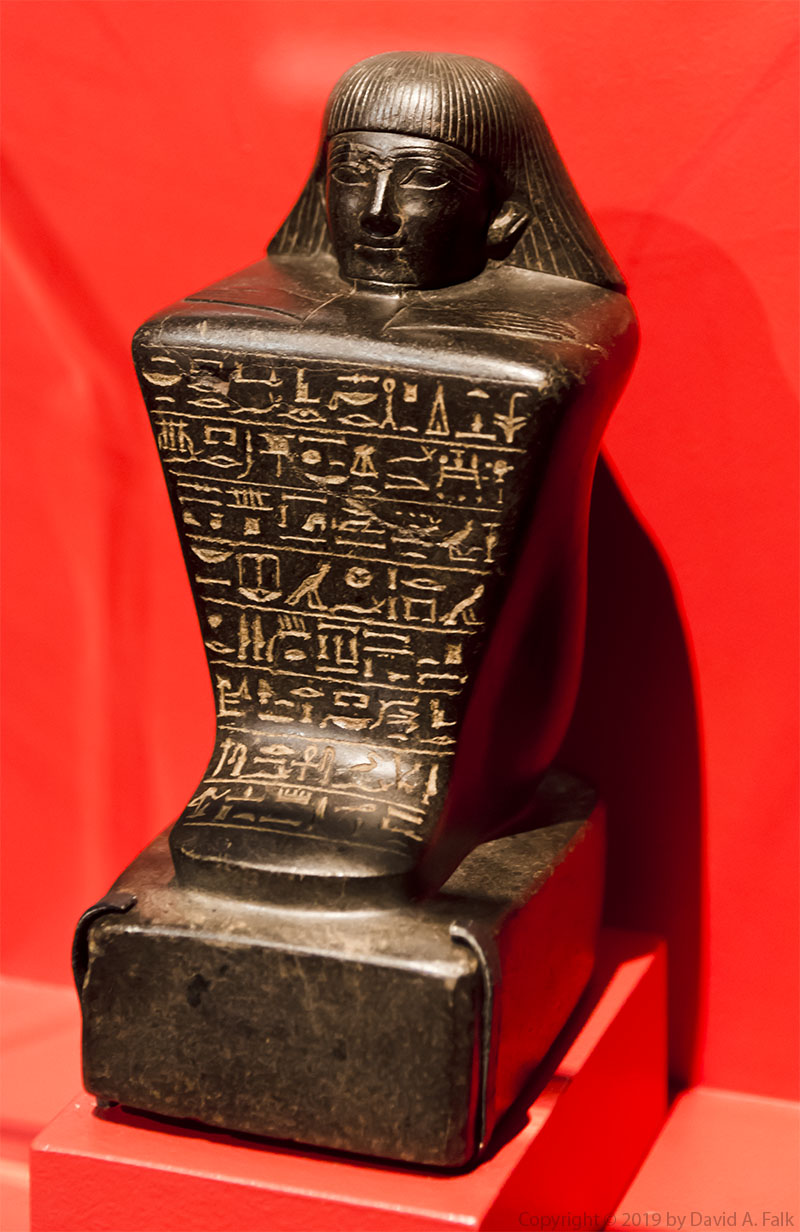
![Seti I relief from Karnak Temple (Illustration from A. H. Gardiner, JEA 6 [1920], pl. 11), with the Migdol.](http://www.egyptandthebible.com/wp-content/uploads/other_photos/migdol.png)

